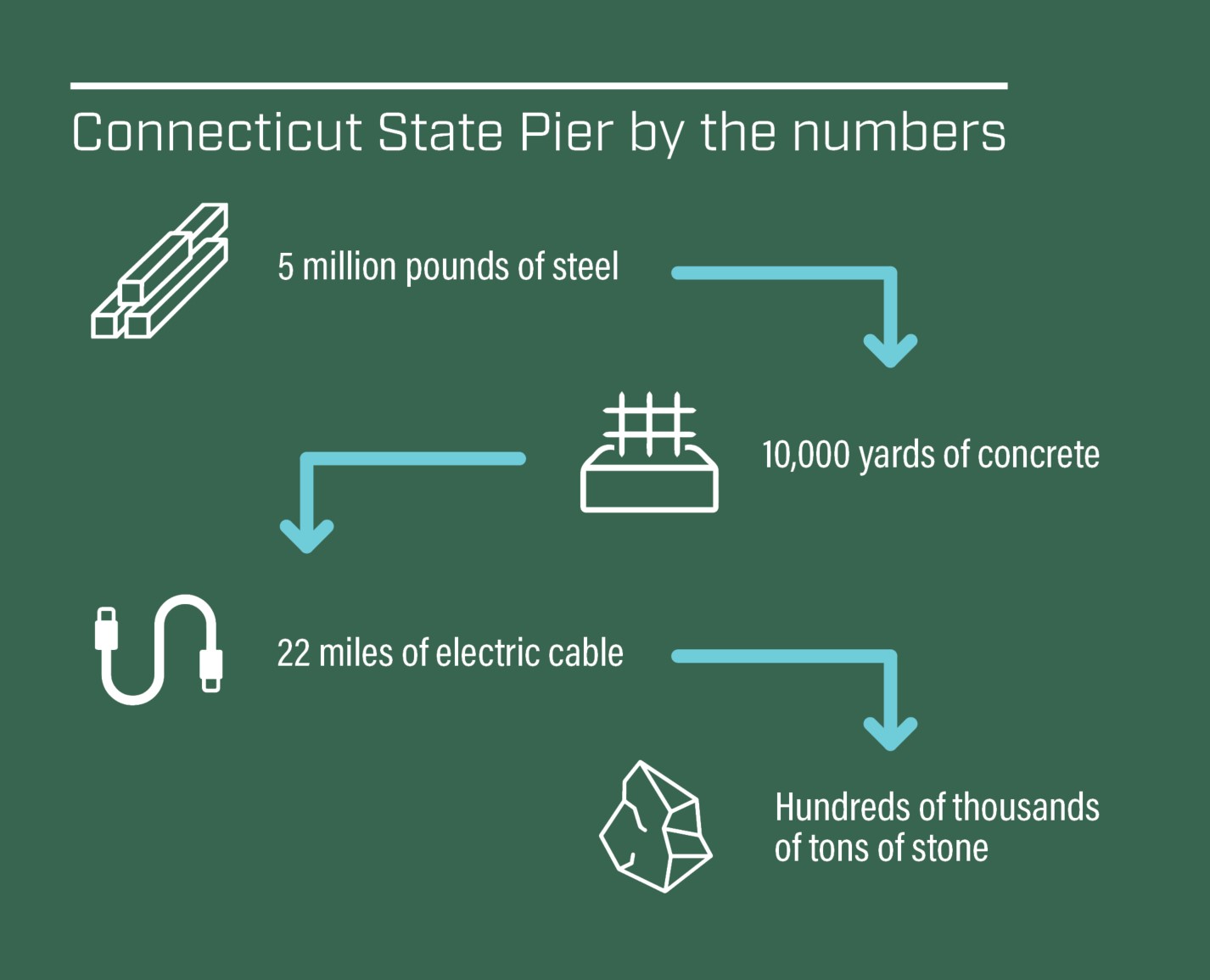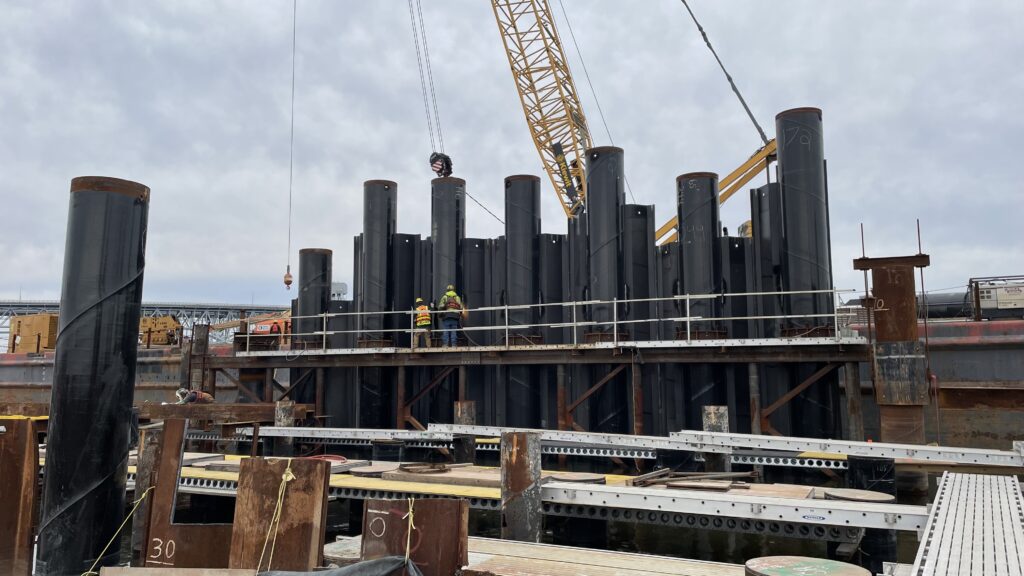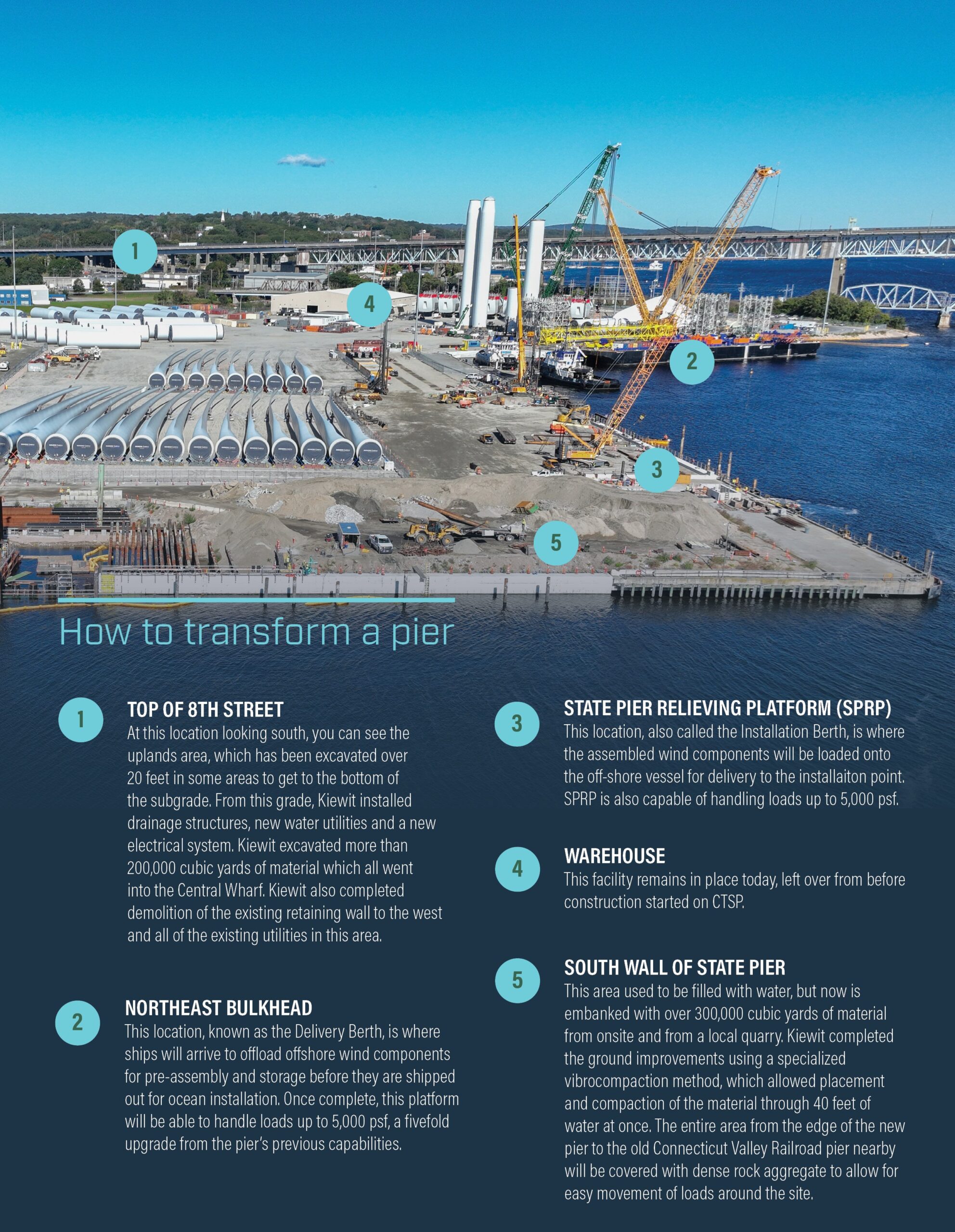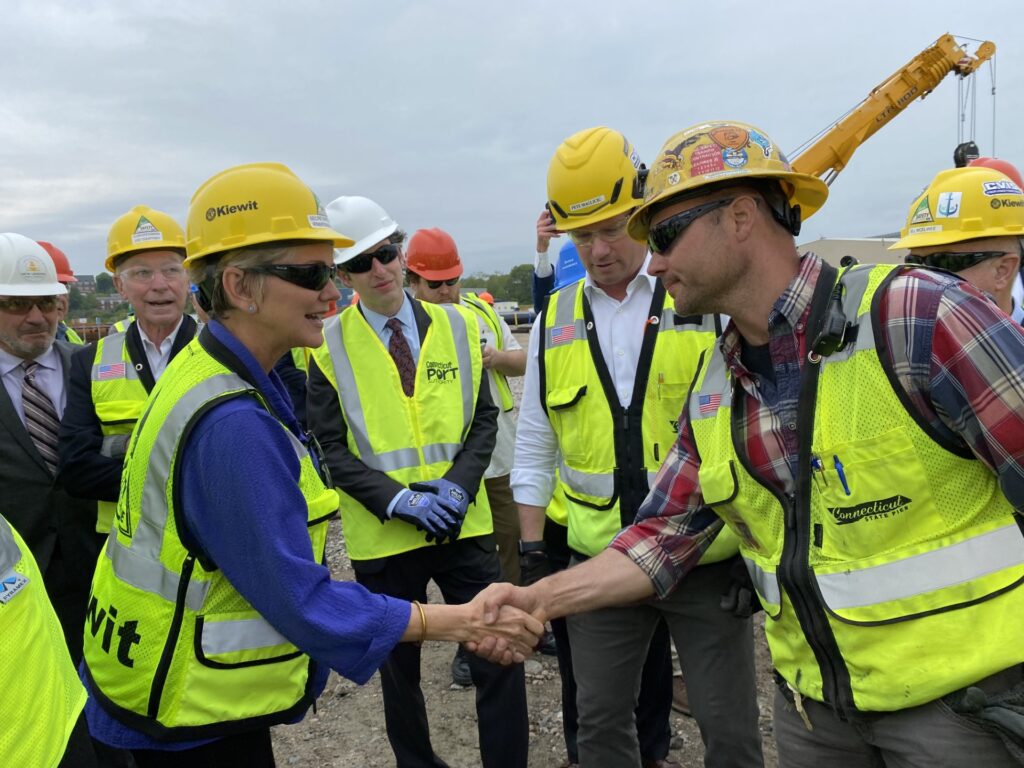Casting a vision for a nation powered by 100% clean electricity by 2035, United States Secretary of Energy Jennifer Granholm took the stage at a 2023 news conference held against the backdrop of the Connecticut State Pier Infrastructure Improvements project. As she reflected on her tour of the construction activities she just witnessed, she emphasized the significance of this endeavor. “The reason why the President was fascinated by what you are doing is because we want to replicate this.”
What “this” signifies is a transformation that holds the key to enabling ocean-based electricity generation in the United States and places the Connecticut State Pier Infrastructure Improvements (CTSP) project at the forefront of this green energy endeavor.
Metamorphosis of a Pier
Kiewit Infrastructure Co. assumed the role of construction manager-at-risk (CMAR) with a mission to help reshape the New London pier in Connecticut into a modern, heavy-lift-capable marine terminal. Situated on the Thames River, its proximity to Long Island Sound makes it a strategic hub for maritime commerce. The pier’s previous life revolved around importing and exporting bulk materials like salt and lumber, and was a key naval port through the 1950s. However, for the New London pier to become the first operational U.S.-based heavy-lift marine terminal accommodating offshore wind towers, nacelles and blades, it required a comprehensive overhaul.
As the CMAR, Kiewit rebuilt and transformed the site into a massive pad able to withstand heavy loads based on current and future marine cargo needs. The upgrades included the creation of two heavy-lift pads, each capable of handling loads of 5,000 pounds per square foot (psf). The rest of the facility’s load-bearing capacity was enhanced to 3,000 psf. All utilities have been upgraded, and areas that were contaminated decades ago have been remediated.

The newly-expanded footprint of the terminal — combined with the Port’s natural, deep-water harbor free of overhead obstructions or other harbor restrictions — now positions the facility as one of the most advanced and efficient marine terminals along the entire East Coast.
Two Become One
Kiewit self-performed much of the scopes involved in pile driving, wharf compaction and concrete structures. At the central wharf, a dual-probe vibrocompaction method was employed to place and compact 400,000 cubic yards of material through 40 feet of water to connect the two finger piers — the first time this technique was used in the United States. What sets this method apart is its use of two vibratory probes instead of one, allowing for the compaction of larger sections of ground in less time. This process streamlined a critical phase of the project, where the frames were needed to support massive lengths of pile above the water’s surface.

Northeast Bulkhead — CTSP’s New Heavy-lift Berthing Platform
Completing the new heavy-lift berthing platform required a 150 EA 30-inch-diameter pile filled with concrete, as well as a combination, or combi, wall made up of 42-inch-diameter pipe pile and NZ19 steel sheet pile. Additionally, crews placed 27 grade beams, one waterside beam and a slab and curb. Bollards, fenders, ladders and tie rods were also incorporated to support construction. The final result enhanced CTSP’s lifting capacity from 1,000 psf to 5,000 psf.
The northeast bulkhead is the location where the new ships will arrive to offload offshore wind components for pre-assembly and storage before they are shipped out for ocean installation.
Nearly 5 million pounds of reinforcing steel, 10,000 yards of concrete, 22 miles of electric cable and hundreds of thousands of tons of stone fill went into upgrading the New London pier. Now, the site stands ready to support offshore wind projects commissioned by Connecticut, New York and Rhode Island. A total of approximately 160 turbines, with an output of 1,760 megawatts (enough to power over 1 million homes) are scheduled for assembly and delivery from New London.

A Beacon for a More Sustainable Future
From its beginnings as a hub for salt, lumber and smaller-scale cargo, CTSP has evolved into a state-of-the-art facility ready to support an influx in demand for clean energy and more diverse, larger-scale cargo.
This transformation represents a vision for a sustainable future which aims to reduce the carbon footprint, create jobs and provide power to millions of homes. As wind turbines rise and offshore wind projects take shape, CTSP will continue to play a pivotal role towards a more environmentally-sustainable future.
Looking ahead to 2035 and the goal of 100% clean electricity, this transformation of the pier represents a key step for green energy in the Northeast.



